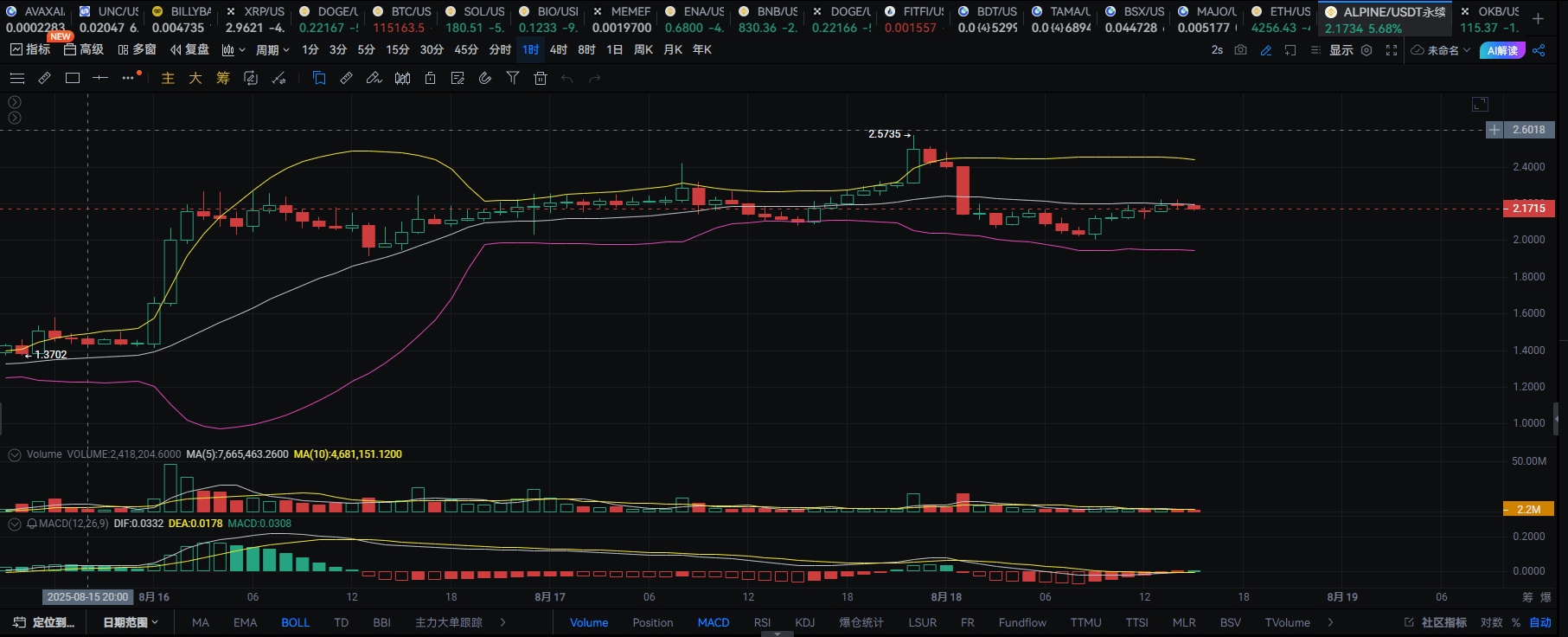ALPINE is about to plummet! Right now, 2 USD is the trap set by the operators!
Opening ALPINE's daily chart, the sideways action at 2 USD is like a dull knife. In the last 30 days, the price hit 2.1 USD five times and quickly retreated, with each pullback precisely bouncing off at 1.98 USD. This is not a coincidence; it's a 'psychological line' drawn by the main force with capital—making retail investors think 'there is support at 2 USD', and then suddenly crashing the market.

Technical evidence:
Fibonacci retracement trap: From the highest point of 3.5 USD to the lowest point of 0.8 USD, the 50% retracement level is exactly at 2.15 USD. The main force intentionally allows the price to oscillate here repeatedly, misleading technical analysts into thinking a 'breakout is imminent.'
Trading volume leak: In the past week, every time the price touched 2.1 USD, the trading volume suddenly shrank by 30%. What does this indicate? No new funds are entering, it's all the main force manipulating the market!
RSI divergence: When the price is sideways, the RSI indicator has dropped from 50 to 45, which is a typical 'price falsely stable, indicator falls first' bearish signal.
Two, 1 USD: A 'graveyard' for retail investors, or the starting point for doubling?
'Teacher, is 1 USD a solid bottom? It rebounded last time it dropped to 1.2 USD!'
I opened the monthly chart and pointed at the 1 USD position with a sneer: this is indeed a historical support level, but support is not a vault; it's the main force's 'liquidation point.'
Revealing the tricks of the operators:
Step 1: Lure the bulls: Let the price hover around 2 USD to attract retail investors to chase the rise, while the main force quietly places short positions in the 1.9-2.1 USD range.
Step 2: Crash the market: Suddenly increase volume and drop below 2 USD, triggering stop-loss orders, with the price heading straight for 1.5 USD. At this point, retail investors think they are 'buying the dip', but the main force continues to push it down to 1 USD, triggering panic selling.
Step 3: Accumulate: When retail investors despair and cut losses at 1 USD, the main force uses pre-set buy orders to catch the falling knife, directly lowering the cost to 0.8 USD.
Entering the market to short now is like boarding the main force's 'harvesting train'!
Three, Doubling Opportunity: How to turn the 'short positions' of the operators into your ATM?
Trading strategy:
Current price 2 USD directly short: Set stop loss at 2.15 USD, with the first target at 1.5 USD.
1.5 USD short position increase: If the price drops to 1.5 USD without rebounding, increase the short position, targeting 1 USD.
Key signal: When the price drops below 1.8 USD, if the RSI also drops below 40, it is a confirmation signal for shorts!
Risk control:
Control position within 20% of total funds, entering the market in two batches.
If the price breaks below 1.8 USD and does not rebound within 3 hours, decisively increase the position.
Four, Suspense: What is the main force's next move?
You may ask: 'What if the price does not drop but rises instead?'
This is the 'psychological warfare' of the main force—they deliberately allow a few people to guess the correct direction while making the majority doubt their judgments. But remember: the real bottom is never 'guessed' but 'dropped'!
When ALPINE drops to 1 USD, you will see a 'long lower shadow'—is that a signal for the main force to accumulate, or a 'lifebuoy' for retail investors?
This article may cause you to miss the short position at 2 USD, but follow @FinancialGoddess, and you will never miss the opportunity to buy the dip at 1 USD.

